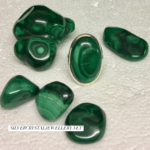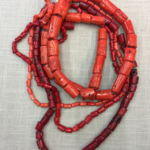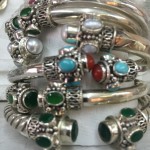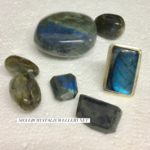Synthetic gems are growing in popularity, not because they are a cheaper alternative to real gemstones, but because they are now manufactured to such a high standard that they can often rival the real thing in looks, shine and beauty
From cheap princess cut engagement ring. When most people think about synthetic Gems, the first thing that comes to mind is a misconception that these are “cheap imitations” compared to the real, natural gems that they are patterned after. However, what most people don’t know is that there are many types of man-made or modified natural gems whose quality and appearance can easily rival those of “natural” Gemstones while costing much less than their original counterparts.
Defining Natural and Synthetic Stones
A lot of different terms are used in the Gemstone industry today, and you have to know what the terms mean to keep yourself from getting ripped off. A natural Gemstone is, by definition, exactly that – a natural stone mined from a quarry, and the only human intervention regarding it’s appearance is to cut and polish it, nothing more. Natural Gemstones of high quality and beauty are the rarest and most expensive types of Gemstones.
Treated Gemstones, on the other hand, are natural gems which, despite cutting and polishing, would have normally fallen below the standards of high quality natural gems. These gems are treated with chemicals and several procedures to enhance their appearance to match higher quality Gemstones. Lastly, there are synthetic Diamonds.
These are man made gems created completely inside a factory or laboratory. Synthetic stones are, in chemical composition, exactly like their natural Diamond counterparts. As a matter of act, they are TOO perfect in appearance, because their physical parameters and composition are made expressly for Jewellery purposes.
Different Types of Synthetic Stones
There are two main types of synthetic stones based on how they were created. The first is factory-produced synthetic stones. Basically, these are stones created using the same elements as a natural stone, and fused together under artificial conditions (like superheating and pressure) to make a Gemstone in much less time than it would take for one to develop naturally.
These can be churned out at a rapid rate and in very large volumes. The second type is lab-grown Diamonds. These are a half-way compromise between mass-produced synthetic stones and natural ones. The same elements as natural Gems are again used to create a synthetic one, BUT instead of speed-fusing them, the elements are placed in a lab whose conditions approach that of the natural processes which create natural Diamonds.
While the process itself is sped up to make a gem in much less time than nature would, it takes more time to “grow” a gem in a lab than it would under a factory processor. However, lab grown gems are able to approach the qualities of a natural gem more than a factory-made synthetic one.
The Qualities of Synthetic Stones versus Natural
Physically, there are several differences between a synthetic stone and a natural one. Perhaps the most ironic difference is that synthetic gemstones are TOO perfect. Created expressly for Jewelry purposes, their basic shapes are made to fit the type of Jewelry they’re meant to be set in. Even their crystal structure is mathematically precise with no deviations whereas a natural Gem will often have a flaw or two in it’s matrice (and if it doesn’t, a perfectly unflawed natural gem’s price will be HUGE).
The chemical composition of the gem is likewise pure for synthetic Gems, whereas natural Gemstones may often have trace elements mixed into it. These small imperfections are how most jewelers tell the difference between a natural and synthetic stone. Price wise, synthetic gems can offer a person much more beauty and value for their money; natural Gemstones of high quality are very rare and thus expensive, whereas the mass produced synthetics are physically the same but cheaper by anything from half to a quarter of the price.
For long term investment, however, natural Gemstones of high quality are a better idea because of their rarity; their value appreciates over time, whereas the price for a synthetic remains constant. The price may even drop over time, especially for factory-made synthetic Gems; natural stones and lab grown stones have no physical degradation over time, but factory-made stones, being made in a hurry, are not quite as durable as the real thing. For this reason, lab-grown synthetic Gemstones are becoming more and more popular over quick factory machine-made synthetics.
For more see cheap diamond solitaire rings and emerald cut rings for less.



